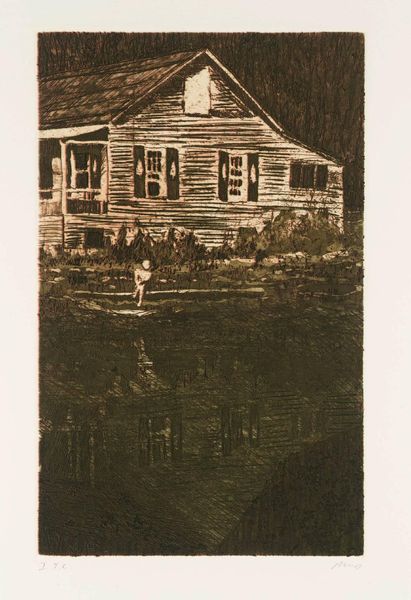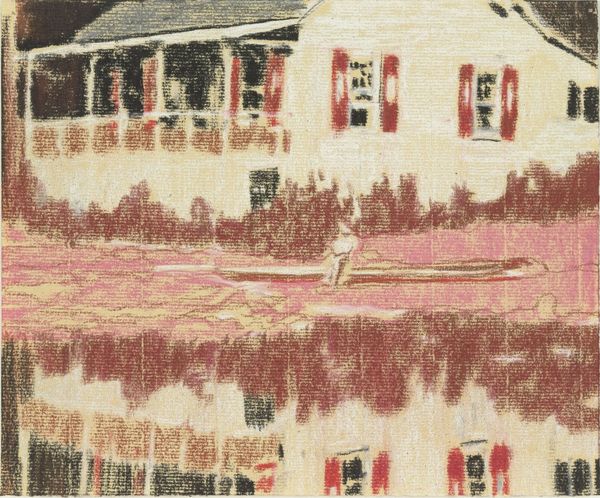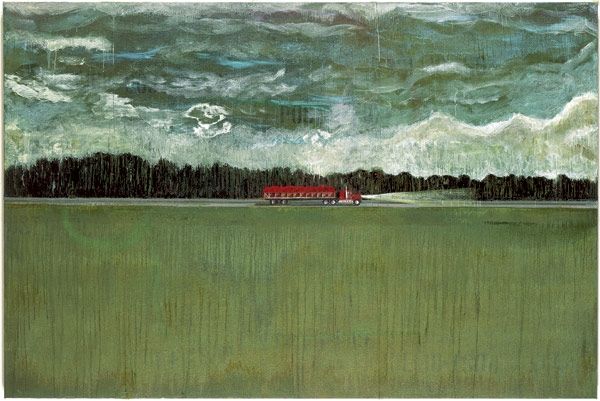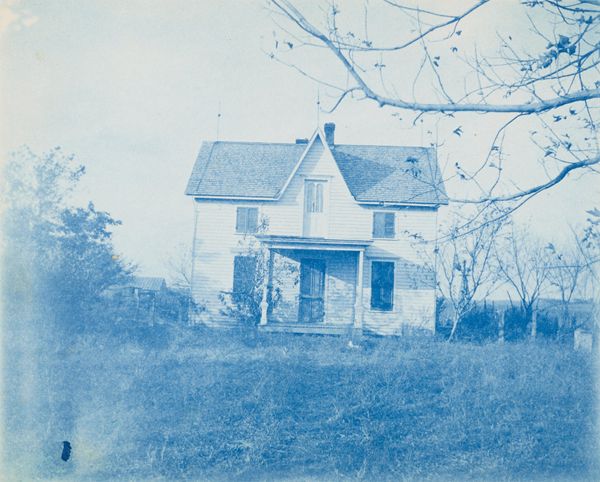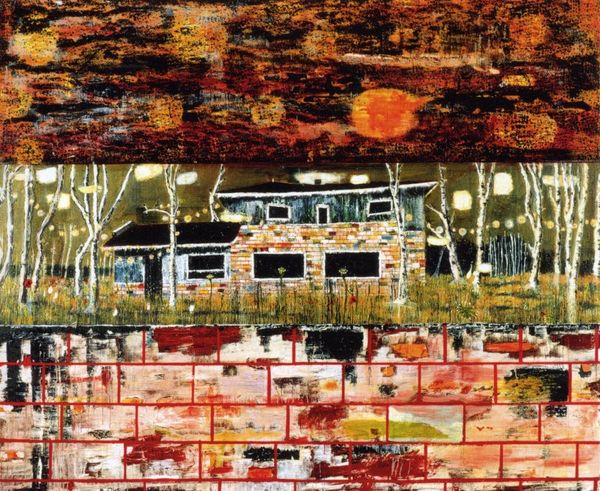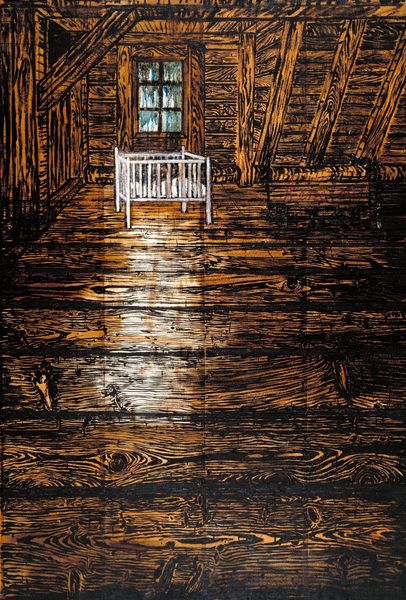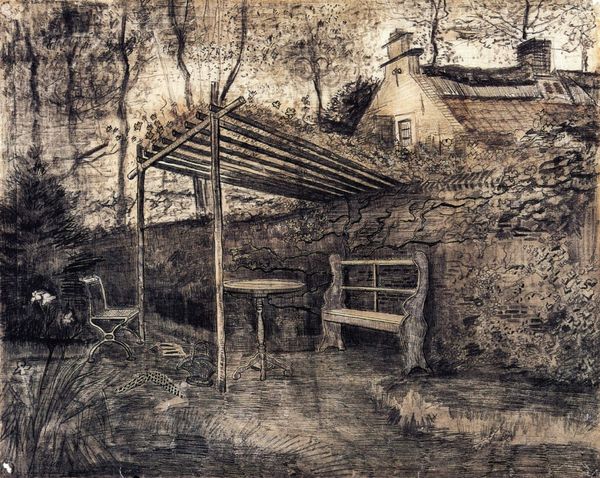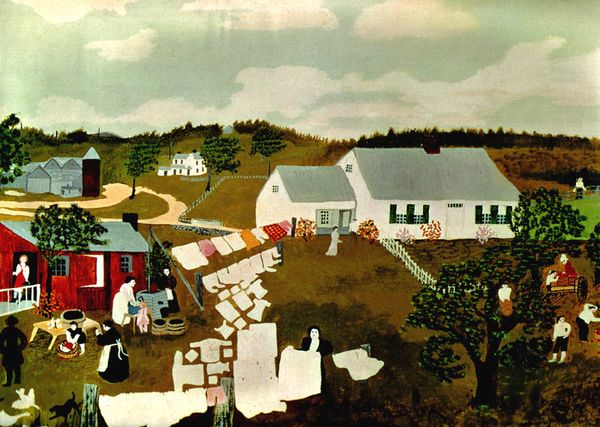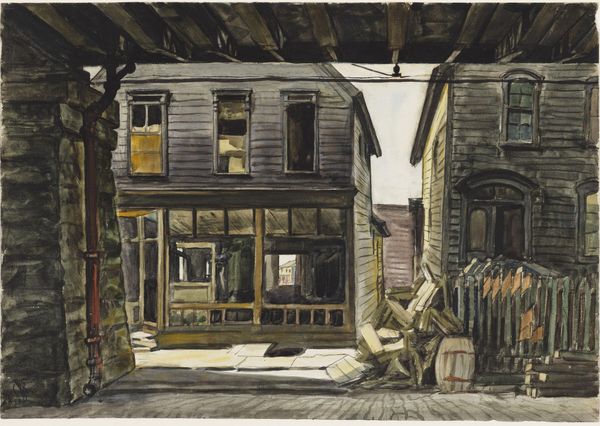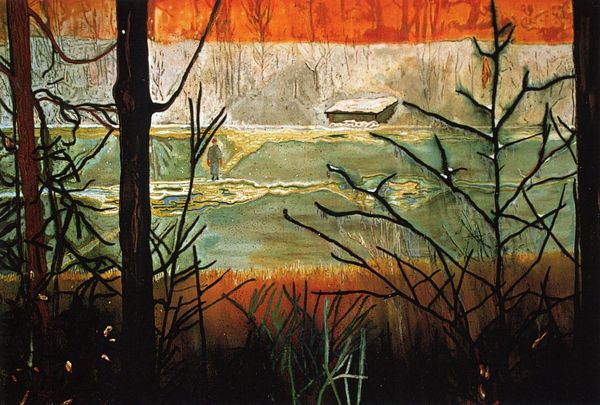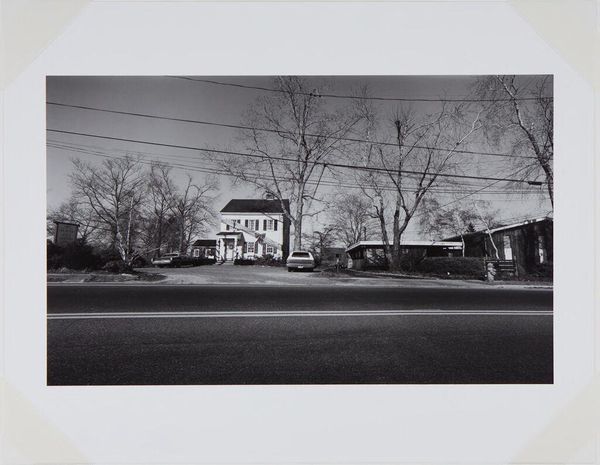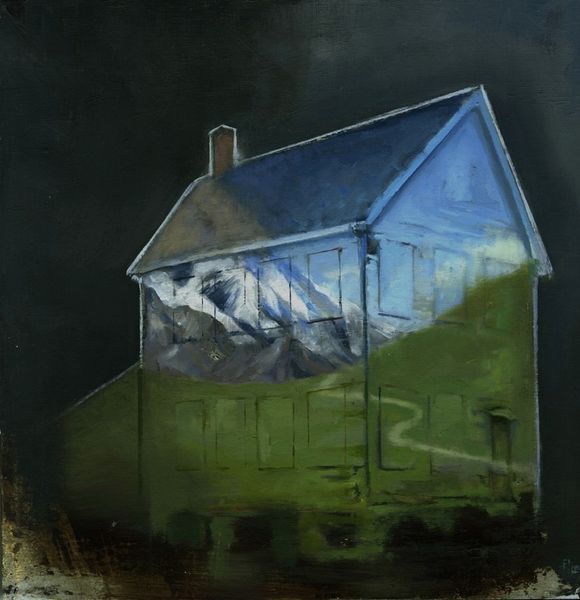
painting, acrylic-paint
#
urban landscape
#
contemporary
#
painting
#
landscape
#
acrylic-paint
#
modernism
#
realism
Copyright: Peter Doig,Fair Use
Editor: Here we have Peter Doig's "Camp Forestia" from 1996, rendered in acrylic paint. I’m immediately drawn to how the reflection seems almost like a ghostly doppelganger of the house itself. How do you interpret this doubling effect? Curator: It's precisely that sense of mirroring that intrigues me. Beyond a simple reflection, what societal narratives are present? This house, suspended between reality and its shadow, reminds me of the liminal spaces many marginalized communities inhabit. The idyllic facade confronts a murky, uncertain reflection. Editor: That’s a perspective I hadn't considered. I was so focused on the visual composition. Curator: Think about it: who historically had access to such idealized rural settings? The seemingly innocent image of a country house also speaks to histories of land ownership, privilege, and exclusion. Whose forest is this, really? Doig's masterful layering creates a haunting echo, a question of belonging. Editor: So you see the reflection not just as a visual trick but as a commentary on societal structures? Curator: Exactly. The use of realism complicates things further. It seems familiar and comforting but with this unsettling distortion below the surface. Where does this comfort stem from, and for whom? Editor: That gives me a lot to think about in terms of the painting’s historical and cultural context. It makes you wonder about the stories that aren't immediately visible. Curator: Indeed. Art allows us to critically examine these seemingly simple images and ask ourselves, "What is really going on here?". The uncanny and eerie stillness becomes charged.
Comments
No comments
Be the first to comment and join the conversation on the ultimate creative platform.
